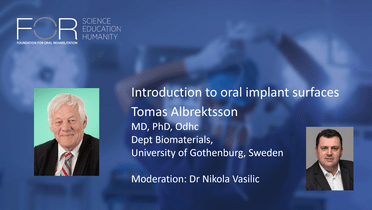探索在线学习平台
Filters
- 全部主题
- 诊断&治疗计划
- NobelZygoma
- 数字化
- 软硬组织管理
- 种植手术
- 重建修复
- 美学
- 护理/长期成功
- 所有结果类型
- Online Course
- 视频
- 患者病例
- 电子图书馆
- 治疗指南
- All Treatment guidelines
- For single tooth treatments
A multi-disciplinary review of key evidence-based principles and clinical treatment steps for restoring edentulous jaws.
- For edentulous treatments
A multi-disciplinary review of key evidence-based principles and clinical treatment steps for replacing the single tooth.
- 检查表Secure your treatment outcomes and avoid blind spots
- All Checklists
- Safety checklists
Designed by leading clinicians, the FOR Safety Checklists help reduce human errors and their consequences.
- Treatment checklists
The checklists on peri-implant tissue health support you in the anamnesis and diagnostic assessment of peri-implant tissue condition and in the treatment options and decisions for affected peri-implant tissue. They also allow concise monitoring of tissue conditions over time.
- 风险评估
- ConsensusLearn about the latest findings on controversial topics
- 资料图
- Other scientific publications


